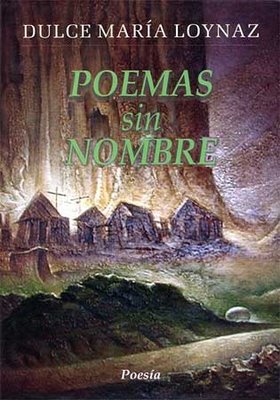4.1.1.16.3 “Poems without a Name”, 1953, by Dulce María Loynaz

The pieces that make up this text, related to the modality of poetic prose, show a refined and lexically precise lyricism, which is the enriched fruit of the aesthetic searches of his successive collections of poems – one could say a search for his own self in the depths of lyrical beauty – and also by the magnitude of his feelings and a certain inner turmoil, at times when he was not immune to the amorous passion aroused or arousing.
César López, in his prologue to one of the editions of the collection, writes: “The poems that have no name occupy a realm touched by the impulse of poetry. Not hypothesis, but incarnation. These living, breathing creatures, in constant struggle, are incarnated spirits. Negation of the soul. Totality.”
Religiosity is a constant feature of most of the texts, beginning with “Poem I,” as a sustained dialogue with God. Here, he establishes a parallel between the lyrical ideas swirling in his mind and God’s creatures, but in “Poem II,” he refers only to his word, later expressing: “There is nothing in it that is not myself; but in girding it like hair shirt and not like a cloak, all my knowledge may lie.”
From the point of view of its aesthetics, it continues to be one of cloistered intimacy, where dialogue is established within the seat of its being and not projected outwards, so the loneliness of the lyrical speaker increases in the lack of communication: “Many things were given to me in the world: pure loneliness is mine alone” (Poem VII).
The theme of love is sometimes explicit and other times latent in the pages, in this sense the lyrical tone does not distinguish between the triad beloved – nature – god, which constitute the outside with which she wishes to merge and in this renunciation lies the core of her poetry, in the way she holds on (Forgive me for everything I can hold on to myself, so as not to go towards you, Lord) in an intimacy sometimes of unbearable density.
The following fragment, referring in the foreground to a little mouse caught in a trap, seems to evoke another kind of coercion (familiar?): “But today I have just discovered that I am only a terrified little mouse at the bottom of a cunning mechanism, a miserable creature captive to a terribly physical and mysterious power, which neither lets go nor kills, but which stands between my body and the world in which this body moved.”
The author’s spiritually closed existence, whether an inherent attitude or provoked by silent family pressure, is nevertheless threatened by love, a feeling that emerges from the never-quite-conjured shadows of the past and is facilitated by new circumstances.
The course of her first marriage, its dissolution and the true reunion with her former love, harmoniously converge in this work – if anything is known about the poetess’s life – in which she leaves numerous keys, certainly not hermetic, to her conception of this feeling:
“I don’t wish to hold you down even with garlands of roses. I don’t want anything of yours that doesn’t spring forth of its own accord, like water from springs.
I will not lay a finger on you; I am pleased to receive you as a gift, not as the fruit of my labors.
If I have to go down to the bowels of your land to look for the diamond I have dreamed of, keep the diamond for yourself, I will not exchange it for my dreams.
I have been able to live on dreams dreamed until now; on a diamond offered reluctantly, I could not live a single day.”








